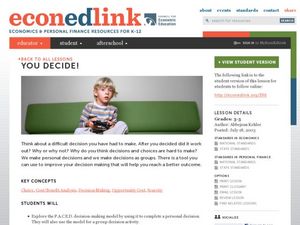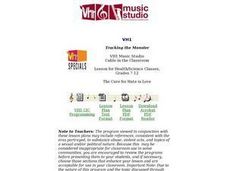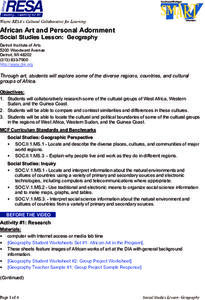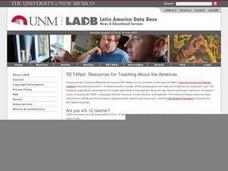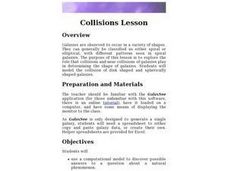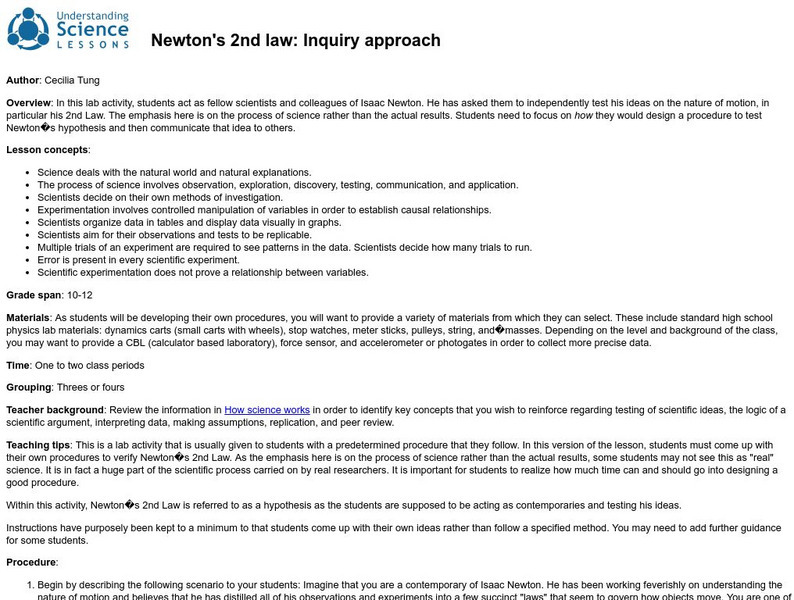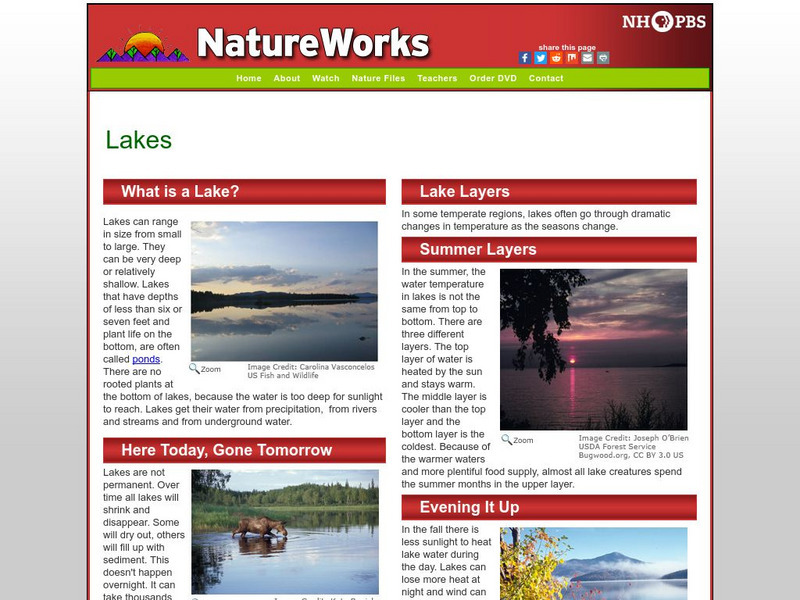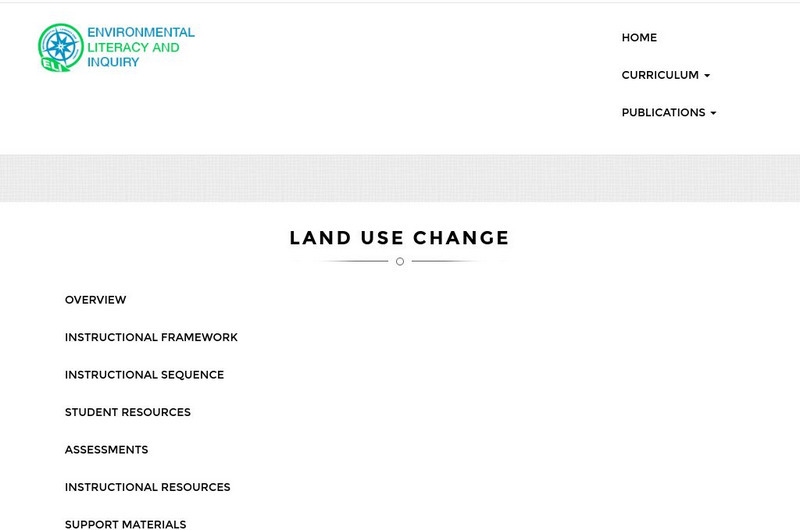Curated OER
Tall Grass Prairies of Arkansas
Students compare maps depicting the past and present range of tall grass prairie in Arkansas. They research to discover what has happened to the prairie, why it is unique, how it contributes to the biodiversity of Arkansas, and why...
Curated OER
A Solution for Precipitation
Young scholars predict the product of chemical reaction using the solubility rules. For this chemistry lesson, students balance ionic equation. They perform a lab to check if their predicted products are correct.
Curated OER
You Decide
Fourth graders, who live on a Native American reservation, investigate how land management is addressed at Tribal Council meetings. They participate in a simulation of a meeting as the discover the workings of tribal government. They...
Curated OER
Ions in the Environment
Students explain the importance of the five main biogeochemical cycles. In this chemistry instructional activity, students discuss how ions are transported in the environment. They design an experiment to collect data on eutrophication.
Curated OER
Predicting the Past
Students study how archaeologists record the past. They discuss archaeology and artifacts. They view a list of artifacts discovered by Marquette at the Illinois Village and answer questions regarding them. They complete a test about...
Curated OER
The Cure for Hate is Love
Students research the HIV/AIDS crisis and use their findings to construct a storyboard of AIDS-related dialogues, images and music for a 30-second commercial intended to raise HIV/AIDS awareness.
Curated OER
Geography
Students work together in groups to research the cultural groups of West Africa, Sudan and the Guinea Coast. They compare and contrast each culture and locate the political and cultural boundaries on a map.
Curated OER
Walking With Thoreau
Students engage in a series of activities geared towards studying the author Henry David Thoreau. They use different sources to obtain information to create context for future lessons. Students attempt to model their own lives to that of...
Curated OER
Electronic Journals about Latin American Folktales
Students exchange folktales with a key-pal using dialog journal writing. They write out a folktale from their own cultural background and exchange it with students of another. They record their impressions of each other's folktales.
Curated OER
Blowing in the Wind
Students compare hurricanes and tornadoes. They write a paragraph explaining how to prepare for a storm. Students give an oral report. They use weather facts to practice math skills. Students record observations of a storm.
Curated OER
Ecology: Symbiosis
Eighth graders identify various types of symbiotic relationships. In this ecology lesson, 8th graders predict whether certain organisms can form symbiosis with other organisms. They discuss and defend their reasoning.
Curated OER
Collisions Lesson
Tenth graders explore the role that collisions and near collisions of galaxies play in determining the shape of galaxies. They model the collision of disk shaped and spherically shaped galaxies.
Curated OER
Scarification
Students examine the process of scarification. They use their prior knowledge to discuss how to change the appearance of the human body. They write a summary about what they have learned.
Curated OER
Peekikng At Public Sculpture
Students use the internet to investigate public examples of sculpture. They reflect upon the possibility of being a reference of lifestyles that can exist in a society. A variety of media sources serve as inspiration for the...
Georgia Department of Education
Ga Virtual Learning: Ap Biology: Nature of Science
In this online course, students look at the big ideas and themes of biology and review how these ideas are used to develop scientific inquiry and research.
American Association for the Advancement of Science
Science for All Americans Online: The Nature of Science
A detailed overview of how scientists look at the world. Written in a way that the average person can understand, it opens up the world of science to everyone.
McGraw Hill
Glencoe Biology: The Nature of Science: Self Check Quiz
Answer five comprehension check questions about the nature of science in this interactive quiz.
Other
Elementary Science Program: Astronomy, Gr. 5 8
"Astronomy is the science that studies the Earth, the Moon and other objects in space. It has helped us discover our place in the physical universe. It is still making discoveries." This landing page gives options for students and...
Science Education Resource Center at Carleton College
Serc: Newton's 2nd Law: Inquiry Approach
In this activity, students test Isaac Newton's ideas on the nature of motion, in particular his 2nd Law. The emphasis is on the process of science, investigation, and experimentation, not the results. Students must come up with their own...
University of California
Understanding Science: Newton's 2nd Law: Inquiry Approach Lesson
For this lesson, students develop their own scientific experiment to test Newton's hypothesis that the acceleration of an object depends on the net force acting upon it and its mass. After completing their designed experiment, students...
PBS
Nh Pbs: Nature Works: Lakes
What is a lake? Discover the answer to this question when you explore this informative resource. This site provides information on how temperature and seasonal changes effects lakes, how lakes are formed, how lakes compare in numbers to...
PBS
Pbs Learning Media: Dinosaur Train
Dinosaur Train sparks children's interest in life science and natural history. As they explore a variety of animals, children develop the inquiry skills and knowledge needed to help them think, talk and act like paleontologists. Choose...
Harvard University
Harvard Smithsonian: Everyday Classroom Tools
The focus of this series of lessons is to engage students in an exploration of the world around them. The emphasis is on inquiry as students learn about the earth, sun, light, shapes and more.
Other
Lehigh University: Land Use Change
An inquiry-based science unit for middle school students centered on how human activities affect environmental changes related to land use. The lessons integrate technology and lab activities while teaching about today's land use and how...




